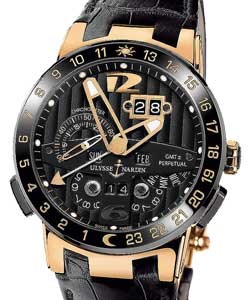In the ever-evolving world of fashion, sustainability has become an essential focal point, driving innovations and ethical choices in how we design, produce, and consume goods. One such controversial element within sustainable fashion is the role of replica watches. While replicas are often seen negatively due to concerns around intellectual property and authenticity, they surprisingly hold potential as a factor in the broader discussion of sustainable fashion. One of the critical arguments for including replica watches in the sustainability conversation is their affordability and accessibility. High-end luxury watches are often made using rare materials, involving resource-intensive production processes that contribute to environmental degradation. Replica watches, on the other hand, provide a more accessible alternative for individuals who desire the aesthetic and status of luxury watches without the financial burden or environmental impact of purchasing the real thing. While they may not always meet the same quality standards as their authentic counterparts, replicas are often made from more readily available materials, which can lessen the strain on precious resources.

From a circular economy perspective, replica watches could potentially reduce waste. Authentic luxury watches are typically marketed as long-lasting, but they are often treated as status symbols rather than practical timepieces. Consumers who frequently purchase high-end watches may accumulate a collection of rarely worn items, contributing to unnecessary consumption. Replica watches, on the other hand, allow individuals to experiment with different designs and trends without committing to a significant investment. This could reduce the demand for authentic luxury goods, leading to a decline in the production of resource-heavy items. Furthermore, replica watches can challenge the throwaway culture that has permeated the fashion industry. By providing an affordable way to access high-fashion styles, replicas allow consumers to make fashion choices based on their personal preferences rather than brand prestige. This could lead to more mindful consumption habits, as individuals are less likely to discard a watch that they chose for its aesthetic value rather than as a fleeting status symbol.
The production of counterfeit goods often involves poor labor conditions and lacks the regulatory oversight that governs the manufacturing of authentic luxury items. This creates a potential conflict with the principles of sustainability, which advocate for fair labor practices and ethical production methods. Therefore, any discussion of Luxe Replica Watches in sustainable fashion must also address the importance of improving working conditions in the replica industry, encouraging manufacturers to adopt more ethical practices. Additionally, replica watches raise concerns about intellectual property and the protection of creativity within the fashion industry. By copying the designs of luxury watchmakers, replicas may stifle innovation and reduce the incentive for brands to invest in new, sustainable technologies. Yet, some argue that the replica market can push high-end brands to rethink their production practices, driving them to develop more environmentally conscious alternatives in order to differentiate themselves. In conclusion, while replica watches are not without their controversies, they occupy a unique space within the sustainable fashion movement.
